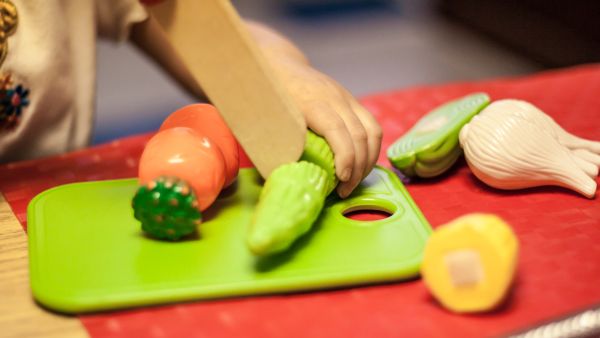
Man cannot live on bread alone, but many a toddler, it seems, lives on chicken nuggets, sliced hot dogs, and macaroni and cheese (as long as it comes from the blue box.) As a parent of a picky eater, you face thrice-daily battles as well as constant worry-guilt that your child isn’t getting the nutrients he needs.
You’re not alone. Check out these six mealtime snacks to help expand your child’s palate as well as turn mealtime into fun time.
Take Guilt Off The Plate
First and foremost, these eating habits are not a result of bad parenting, contrary to the opinion of your Aunt Sally. It’s common for children ages 2 to 5 to have a fear of new foods. Most grow out of this phase, but about 25% do not. Since about 25% of the adult population has a bitter-taste-receptor gene that makes them hypersensitive to some flavors, perhaps your toddler is simply a “supertaster.”
As long as your pediatrician confirms that your child is growing at a healthy rate, ditch the guilt and relax. Not every bite has to be a battle when patience and smart strategy can win the war.
Anxiety Is A Terrible Sauce
If you and your child have been experiencing frequent mealtime skirmishes, it may be time to scale back. Forcing a child to swallow a bite of something that he doesn’t like may make him less likely to try something new later. Offer him the option of spitting it out. Though not attractive or socially correct, it’ll ease the pressure he may feel about taking a chance, especially if one or two of those tastes ultimately pay off as a new favorite food.
Spoon Out The Same Thing, But Different
If your child won’t touch anything but white bread, try offering slightly different kinds that look similar, such as oatmeal or sourdough brands. If he’ll only eat crackers, put on his plate an animal-shaped, whole-grain cracker amid his favorites. If your child only eats crunchy peanut butter, try offering it on apple, pear, or mild-tasting slices of jicama. Toss a single raspberry in among a gleaming pile of blueberries and see if he’ll bite.
Let Him Pick It Himself
If you’re fortunate enough to have a backyard garden, introduce your child to the joys of growing his own food. A child who has watched a green tomato ripen may feel more comfortable taking an experimental bite than a child who knows the vegetable only as a limp slice in someone else’s salad. Engage your child in the cooking process, first by cooking or assembling his own favorite foods and then by cooking foods you hope he’ll eat. Even a trip to the grocery store, where he can see, feel, and smell new foods, can inoculate your child against the fear he may experience when faced with a new vegetable on his plate.
Resist The Temptation Of Sugar
Though it may seem the quickest and surest way of making your wary toddler eat broccoli, rewarding him with a cookie may instigate a long-term habit with deleterious health effects. It would be better to model good eating habits by allowing treats in moderation, and rarely as a reward.
Pepper With Patience and Persistence
It can take a selective eater ten or fifteen tries before he or she becomes comfortable with a new taste, so don’t be quick to dismiss a food altogether. Consider ways you can reintroduce a new food in another form. For example, offer his favorite fruit (apple slices, blueberries, pears) along with yogurt as a dip. Arm him with a toothpick, and he may just play along. If this doesn’t work, don’t despair! You’re teaching your child healthy eating for a lifetime, so check out these further tips for picky eaters.
Note that a very small proportion of children may have a gastrointestinal issue that makes eating certain foods uncomfortable. If you suspect that your child’s eating behavior may have a root in a physical problem, never hesitate to contact your pediatrician.





















